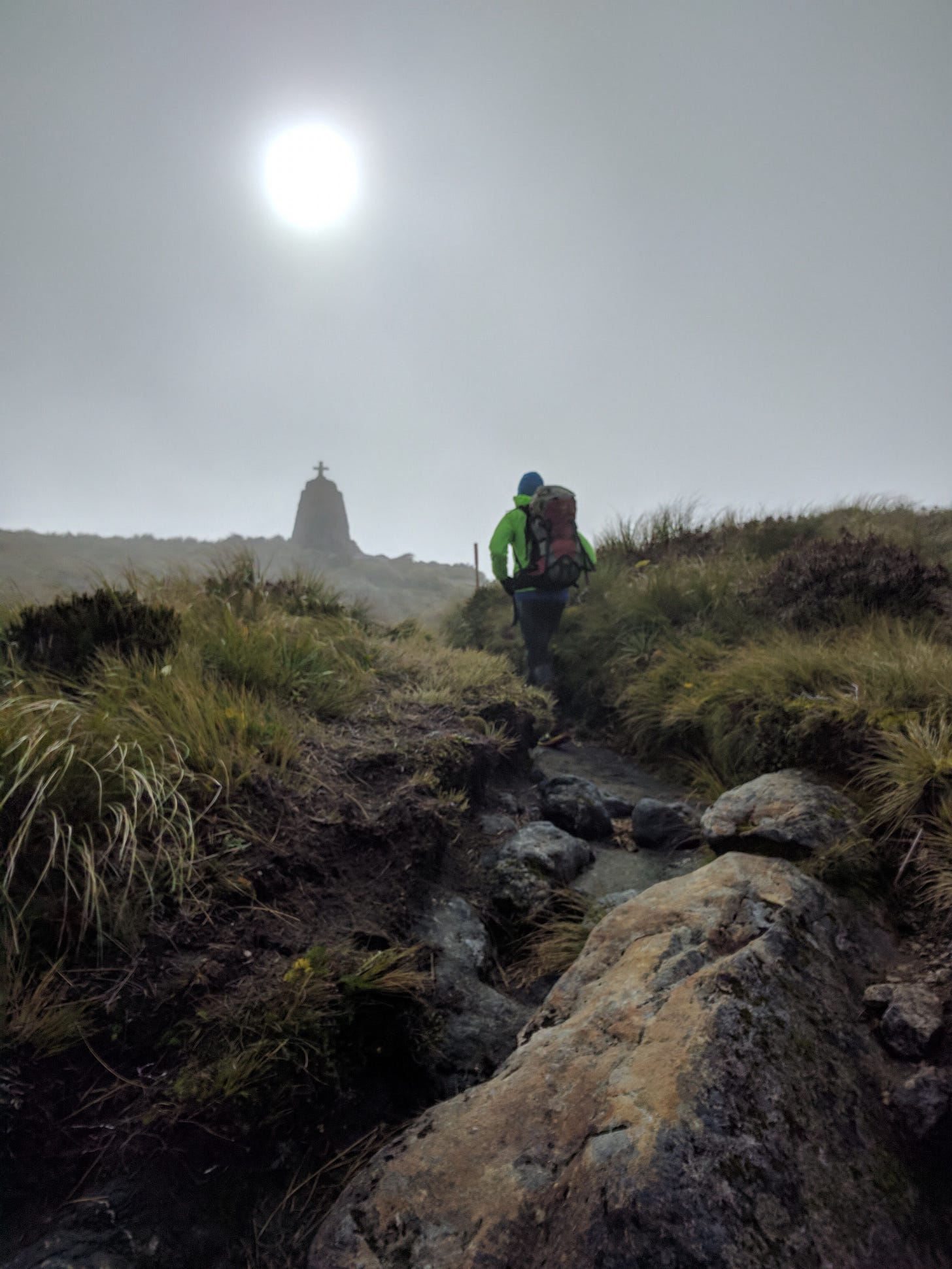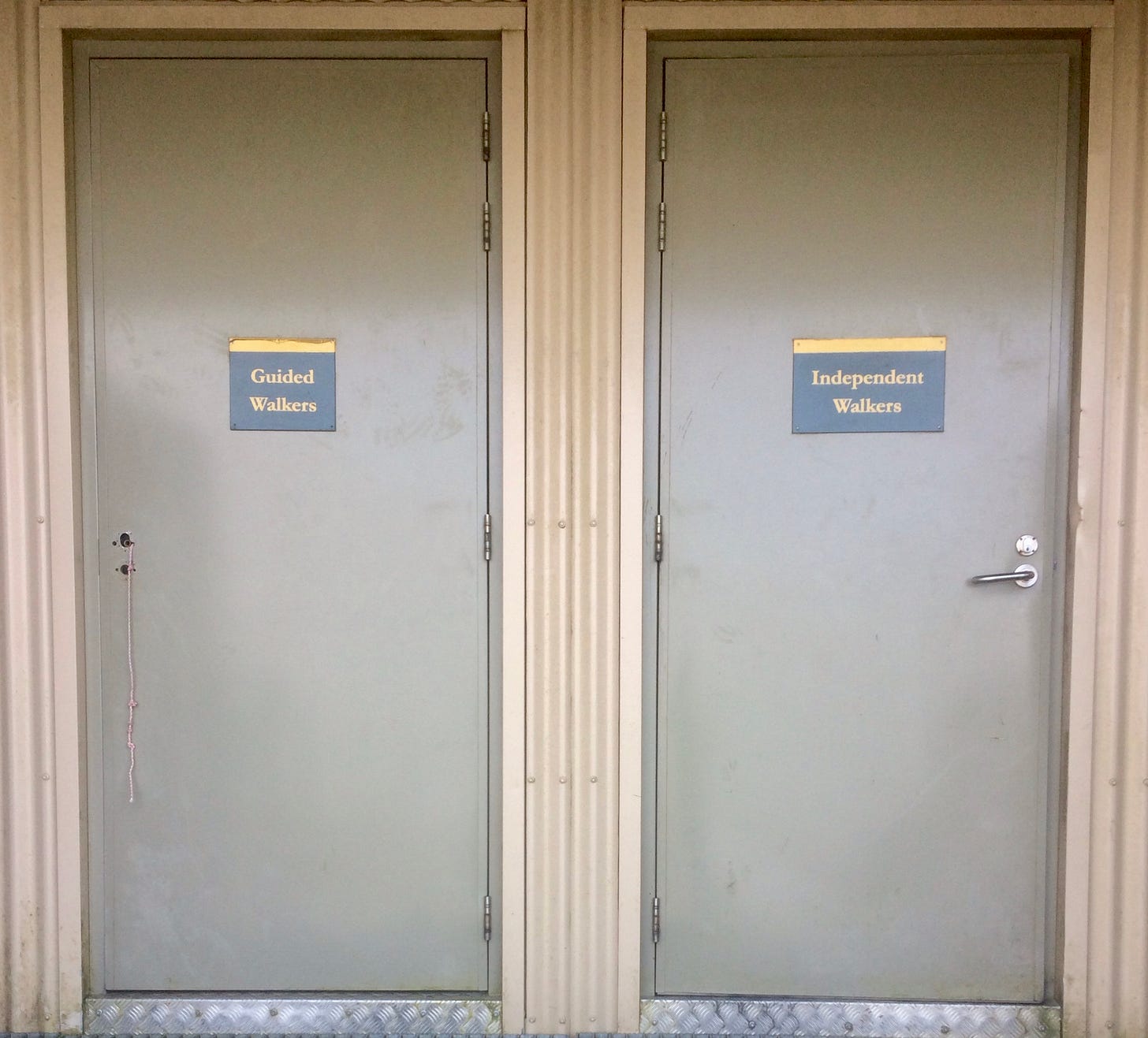Pricing and fairness on the Milford Track🍋
$92 per night for a hut is too expensive and unfair, says the NZ Herald. But is a lower price any fairer?
The Milford Track, arguably NZ’s premier Great Walk, attracts New Zealanders and foreigners alike. It involves three nights staying in huts, either those provided by the Department of Conservation (DOC), or by Ultimate Hikes, a private tourism operator.1
The Milford Track’s popularity means that demand for bunks in the DOC huts far exceeds supply. DOC limits supply to just 40 slots per day between late October and 28 April.2 Demand is huge, with slots selling out in as little as three minutes after bookings open each year.
DOC’s plans to increase Milford Track hut fees has raised the ire of the NZ Herald. According to a recent editorial:
$92 a night [for NZ residents is] a far cry from the $3 maintenance fee Kiwis were asked to pay for the same walk in the summer of 1992.3
Dire consequences ahead
The Herald minces no words in predicting dire consequences from higher hut fees:
raising the cost of NZ’s Great Walks has potential ramifications for the social fabric of the country … Making the outdoors harder to access is not the way to help Kiwis look after their own welfare … we’ll risk leaving our precious land to be explored only by foreign visitors who can afford to do it.4
Unless, it says, government subsidises walkers:
there [is] a good case for why the government should take on that extra expense, rather than pass it on to the hikers.
The Herald’s underlying concern, as I understand it, is fairness. Higher hut fees will price deserving people — variously referred to as “the average person”, families, and Kiwis “forced to tighten their purse strings” — off the Milford track. This will leave New Zealanders unable to “reconnect with nature”, which is necessary for their mental health, and more generally for building public support to deal with a “climate emergency”.
This market might look like classic Econ 101 supply and demand …
Every economist (and many non-economists) has seen the diagram where a government subsidy lowers the price of a good, shifting an upwards-sloping supply curve to the right. The good is now sold to more consumers — these being the people that were not willing (or able) to pay the old price but are willing to pay the reduced price. “Fairness”, in terms of the proportion of the population that can partake of the product, is thus improved.
Hut fees, however, represent a small fraction of the total cost to walk the Milford Track.5 Most walkers also face the costs of getting to Queenstown, typically by air; then to Te Anau by bus or car; accommodation in Te Anau before and after their walk; and bus and boat transfers to the start, and from the end, of the track. And then there’s having the appropriate outdoor gear, fitness and experience for a very tempestuous environment.6 A 50% subsidy of the hut fee would reduce the walker’s costs by $138, which might be just 5% of an Auckland-based walker’s total trip costs. A 5% reduction in the total cost won’t budge the fairness dial, unless the supply curve is very near flat.
… but the supply curve is vertical, not flat
Government policy restricts supply to precisely 40 slots in DOC huts along the Milford Track. The supply curve is vertical at 40 units, so it won’t shift in response to a subsidy.
And it’s clear that demand at current prices far exceeds that limit. Yes, slots can only go to those willing or able to pay the total cost of their trip. But that’s a large group, relative to 40 slots a day. Available slots go to those who are keen, can commit to dates early, are flexible with timing, are fast on the booking site, and are lucky.7
In such a market, I would expect that dropping the price will have a negligible effect on the fairness of the allocation, where fairness is determined by widening access based on ability or willingness to pay.8 I can’t see how price subsidies, the policy solution advocated in the Herald’s editorial, could make slot allocation fairer. In all likelihood, DOC could set the Milford Track hut prices significantly higher with negligible negative effect on fairness.
Seeking fair allocations in markets with non-price rationing
If changing the price won’t make things fairer, then what would? Specifically, what mechanisms can increase fairness — however defined — when goods are rationed by non-price mechanisms?
Over allocation — more demand than can be supplied — is more common than you might think.9 A great example of this problem, and of a sophisticated allocation system, is the New York City Marathon:
Every year, the New York City Marathon has to deal with a classic economics problem: How to allocate a scarce resource. Despite being the largest marathon in the world, it still doesn't have enough slots for everyone who wants to run. So, is there a "fairest" way to decide who gets in, and who doesn't?
Fair is a philosophical concept, which makes picking the fairest way to allocate a scarce resource a complicated problem. Versions of this puzzle pop up all over the place, from school admissions to housing lotteries to job applications.
The fair allocation problem has no definitive solution. But the New York City Marathon has come up with a clever system to deal with it, and to keep 100,000 type-A runners happy (or at least not angry).10
The NYC marathon organisers are trying to achieve multiple goals. As well as wanting to fill all available slots and cover their costs, they want to:
be fair, and be seen to be fair;
attract the world’s fastest runners (to make it a memorable and newsworthy event);
attract overseas competitors;
support worthy local causes;
not to price out or otherwise exclude local runners.
Their solution is to split up the pool of available slots into five chunks. Each chunk uses a different fair division solution, each with its own idea for what fair could or should mean. The pools are matched to the goals:
a lottery, in which every applicant has an equal chance (allocation by luck);
those meeting a time cut-off, evidenced by results in another race (allocation by running speed);
overseas entry as part of a travel package (allocation by price, for those meeting the criteria);
charity entry, for those raising funds for local charities (allocation by price and/or charitable effort); and
committed local runners, evidenced by completing 9 specified local running events (allocation by “effort as a proxy for value”).
Variations on a theme
Demand for some running events in New Zealand exceeds supply, and event organisers have adopted similar allocation tactics.
The Kepler Challenge, held every December in Fiordland, sells out in minutes after entries open in July. It allocates slots by keenness and typing speed, and then by queuing (for those laggards that end on the waitlist).
The Kepler organisers supplement this allocation by offering guaranteed entry to the previous year’s winners, increasing the proportion of fast runners.11 Other entrants can guarantee a slot by paying a $1000 fee, which is donated to a local charity.
Fair allocation and walking opportunities
DOC provides around 950 huts on roughly 14,000km of tracks spread across the country. The Herald editorial was, in my view, far too quick to generalise from the prices for the 3 huts on the Milford track. Many DOC huts are free, and fees for the others are mostly between $10 and $25 per night. The Milford Track may be special in the national psyche, but there are lots of other fantastic walking opportunities available at lower prices, and with less congestion.
That said, if DOC sought a fairer allocation of slots for the Milford Track in isolation, then fiddling with pricing won’t help. It can learn from others who have faced — and dealt with — fair allocation problems for goods not rationed by price.
By Dave Heatley
Ultimate Hikes customers walk the same track but receive a different product from the so-called “independent” walkers using DOC huts. The Ultimate Hikes product includes guides, all meals, and an additional night’s accommodation and cruise in Milford Sound. They carry 5-7kg packs, much lighter than those of independent walkers. While more expensive (2024/25 packages start at $2750 per person, ex Te Anau), the guided walk is a better option for those with limited hiking experience, confidence, or physical fitness. This post treats guided and independent walkers as separate markets, though there is no doubt some overlap.
A small number of experienced walkers attempt the Milford Track outside of the official Great Walk season. They have to deal with limited availability of boat transport at both ends of the track, and the risks from avalanches and flooded rivers. These walkers pay reduced hut fees, but receive fewer services from DOC.
The Herald’s price comparison ignores inflation. ($3.00 in 1992, adjusted for CPI, is $6.22 in 2023. Or $21.77, using the more appropriate housing deflator.) It also disregards substantial hut quality improvements over the past 22 years. And while it declares $92 to be over-priced today, it is equally possible that the 1992 fee was, in fact, underpriced. All that said, hut fees are prices set by a monopoly provider, and so deserve public scrutiny.
Foreign visitors will pay $130 per night, a higher price than NZ residents. (Bookings data shows 80% of bunk space was secured by Kiwis, followed by Australians at 10% and Americans at 5%.) Younger people (5-17) receive a 50% discount, and people with a community services card receive a 25% discount.
The Herald editorial acknowledges this but fails to identify its consequences.
Milford Sound is one of the wettest inhabited places in the world, recording 9259mm of rain in 2016.
A cancellation results in the slot being freed up for others to book. Such slots also end up being allocated to those keen, flexible, fast, and lucky.
My expectation is backed up by DOC’s analysis that its “youth go free” approach adopted in 2008 did not noticeably increase child and youth participation on the Great Walks.
Emergency hospital admissions in New Zealand are one example of a good allocated by a non-price mechanism — a topic covered in my post An economist staggers into a hospital.
Kenny Malone (2020). Advanced fairness at the marathon. NPR. [Podcast]. Transcript.
Another example is the Old Ghost Ultra, held each February near Westport. It is also over-subscribed and has adopted similar allocation tactics.








"we’ll risk leaving our precious land to be explored only by foreign visitors who can afford to do it"
Just because "foreign visitors" can afford it doesn't mean they will pay the price required. They must value the walk more than the total cost of doing the walk. And if they do value the walk more highly than locals aren't they the one we want doing the walks? Isn't it efficient for them to be the ones getting to do the walk?
There is an abundance of great walks throughout the country that are totally free but sometimes do require one to get off their bums and actually do it. A small pack, appropriate gear, some food and water and off you go into this outdoor paradise that is New Zealand. Those that want to have an easier option can pay for the experience.